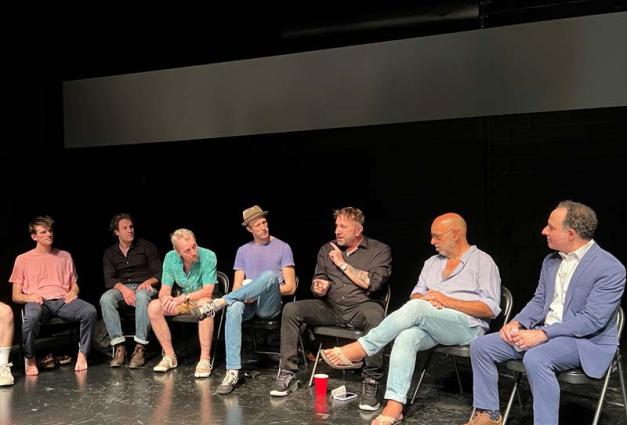As social psychologists, some of the questions we perpetually grapple with in our research relate to themes of conflict and oppression, inequality and injustice, power and hierarchy, and the enduring social problems they can cause. As we enter a new year amid various military aggressions, we are now more than ever in need of a world that knows peace. However, while most people can agree that peace is necessary and important, it is also clear that not everyone understands peace the same way, or can agree on how it can be achieved.
To better understand what contributes to our understanding of peace, I reached out to someone who actually studies the topic and can provide a nuanced and scholarly explanation. This month, I sat down with Ekin Birdir, a fifth-year PhD candidate in Social Psychology at the University of Kansas, to discuss her research on the concept of peace, and how culture and identity shapes the way people think about it.
Can you tell me a little about your research?
Yes, of course. I am broadly interested in knowledge production and engagement processes. Accordingly, I am interested in collective meaning-making through social representations and the extent to which these representations speak for the hierarchical relations embedded in discourses and social realities. For example, I am currently working on investigating the social representations of peace among ethnic majorities and ethnically minoritized groups in Türkiye. In this work, I interview Turkish and Kurdish individuals from Türkiye and analyze cultural documents to grasp the representations related to "peace" among these two groups of people.
I'd love to hear more about how you began researching peace and knowledge systems from a cultural perspective.
I am a citizen of Türkiye, and my ethnicity is mixed. This speaks a little about my positionality in a country that adopts an anti-ethnic regime (Aktürk, 2013). The anti-ethnic regime grounds its societal rationale in the premise of "tractable collective identities". The anticipation is that ethnic identities will be assimilated and become a part of the national identity. So despite the country having multiple ethnic groups, the expression of these ethnic identities is not allowed.
This assimilation and restriction of cultural expression of ethnically minoritized groups is intertwined with creating a dominant discourse, and inevitably, a collective reality, that favors certain ways of being (Turkishness, in this case) by providing a skewed understanding of national history. An example of this skewed understanding is how "desirable" social constructs—like "peace"—are defined in mainstream discourse, from a perspective that glorifies the actions of the Turkish state to maintain and expand its power over ethnically minoritized groups.
I observed two main conceptualizations of peace in Türkiye. The first one was in line with the benefits of the Turkish state, commonly adopted by the Turkish military. I noticed the Turkish military has a systematic pattern of naming military operations that involve intervention on another country or a minoritized group using peace-related words (e.g., Peace Fountain, Olive Branch, Cyprus Peace Operation). The military, and the construction of reality by the military, has exceptional importance for Turkish ethnic identity. The Turkish History Thesis, a thesis that emphasizes the militaristic characteristics of Turkish ethnicity, facilitated the emergence of the military-nation myth, which implies that the essence of Turkish identity is that every Turk is a soldier. This special blend of ethnic identity and military made military service a cultural component of Turkishness (Altınay and Bora, 2004).
The second conceptualization was outside of the mainstream state discourse. I observed that social activists, people who demand social equality and justice, and agents that aim for social change use peace and peace-related words to describe events, acts, and organizations that make explicit demands for equal rights (e.g., Peace gathering in Ankara train station, Peace Academics, Peace and Democracy Party). This conceptualization was drastically different from the conceptualization of peace by the state, which reminds one of Moscovici's polemical representations (1988). Polemical representations (2001) refer to the conflicting representations of the same construct among different groups of people. These representations often reflect real conflicts between groups, and these conflicts are commemorated purposefully. Hence, I figured an investigation of polemical representations of the same construct (i.e. peace) can help trace the techniques of the state in creating a psychological reality for its citizens.
As someone who researches the topic of peace, can you tell me a little bit about how it is conceptualized in scientific literature?
Generally speaking, scholars discuss two main perspectives on peace: negative and positive peace (e.g., Galtung and Fischer, 2013; Nixon, 2011; Sarrica and Wachelke, 2004; Ward, 2015). Negative peace entails the absence of (physical) violence, which is conceptualized through themes of harmony and silence. However, this conceptualization disregards the structural violence exerted on minoritized populations and demands these populations to be silent in response to the systemic violence they experience. Positive peace, in contrast, entails an investigation of systemic violence from a critical perspective to address inequalities and unfair ways of living in the society. Positive peace communicates that peace is not a possibility unless exploitative structures that create social hierarchies change.
Accordingly, negative peace is a widely accepted conceptualization among the states and privileged groups of people to provide justifications for the oppression of minoritized communities. Positive peace, on the other hand, is a prominent conceptualization among communities who have been experiencing systemic oppression (e.g., denial of their native land, cultural assimilation) that demand humane and fair futures.
Can you share some findings that you're excited about from your work on how people's cultural perspectives shape their beliefs about peace and slow violence?
The findings in my work are in line with the conceptualizations of peace as a function of power and status. Peace is a political construct that cannot be abstracted from the context it is used under. Turkish participants in my work defined peace through themes of harmony, lack of conflict, and well-being of Turks—corresponding to negative peace. On the other hand, Kurdish participants defined peace through themes of social justice, cultural recognition and expression, and equal rights—corresponding to positive peace.
As much as these findings are context-specific with regard to the oppression Kurdish people experience in Türkiye, they extend beyond the ethnic groups of Turks and Kurds. Many other examples corroborate the idea that negative peace is a social tool for the state to exercise and maintain its hierarchical power on the citizens according to its benefit (Dixon et al., 2010). My review of the cultural products by Black and White Americans in the U.S. reflects differential engagement with peace as a function of their group membership. While Black discourses understand peace intertwined with equal rights and social justice (e.g., "No Justice, No Peace!"), White (mainstream) discourses understand peace as a condition where there is no physical violence and disruption to present realities.
Negative peace, therefore, is a motivated form of defining optimal social relations for the sake of the state. It proposes many dangers to minoritized communities by preventing their resistance against oppressive systems and disregarding the structural violence they experience. Further, privileged members of the society have the "luxury of unknowing" outside of the mainstream discourse, which reproduces the slow violence minoritized populations experience. Including academics, individuals in Euro-American worlds are inhabiting spaces that are psychologically detached from colonial violence due to their privileged positionality. In contrast, a majority of the non-Euro-American populations live in realities where colonial violence is a part of daily life (Adams et al., 2015).
Therefore, it is of utmost importance that academics from marginalized settings produce knowledge on peace to build international coalitions to address structural inequalities. Academics from those communities not only engage with decolonial theory as an intellectual project, but rather decoloniality for them (us), is a form of survival (Adams et al., 2015). I believe changing the discourse is the first step to changing the colonial realities we are subjected to. It is essential to contextualize the violence, as well as peace, if we want to change the world for the better. Otherwise, the mainstream discourse will continue to serve the privileged by protecting hierarchical systems and describing minoritized populations' resistance for social equality as disruptors of peace.
Many thanks to Ekin for her thoughtful response on cultural conceptions of peace, how these conceptions are used in discourse, and the role of academics in addressing structural inequalities.



